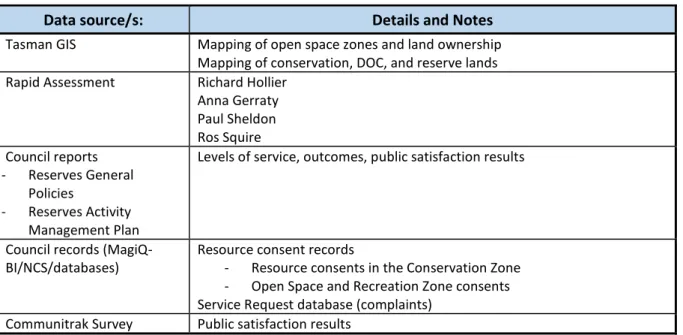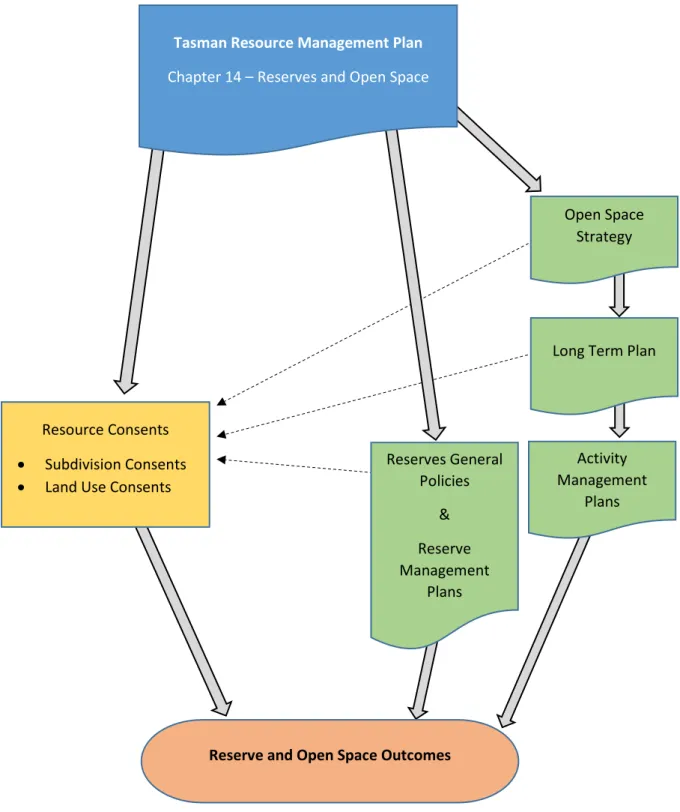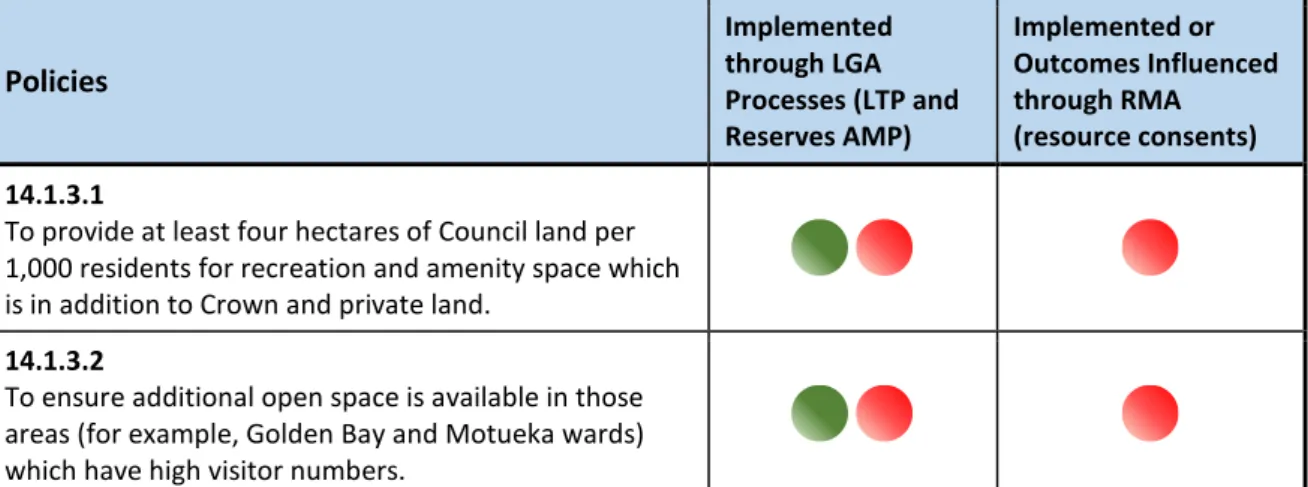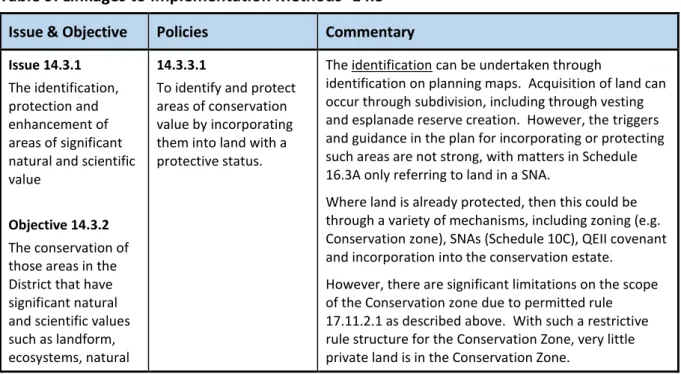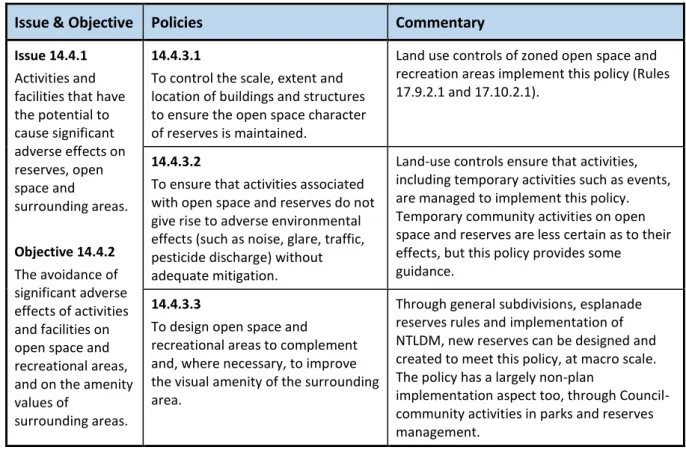The TRMP created three zones: the Open Space Zone, the Recreation Zone and the Conservation Zone. Some consideration should be given to any changes needed to better provide for future open space needs. Providing a clear policy framework that reflects the need to secure land for reserves and open space at the time of subdivision.
Efficient and effective use of open space and reserves to meet community needs for recreation and amenity. Review – provides high level policy that supports the need for appropriate zones, and reserves, open space and public facilities. Review – Provide high level policy that supports the need for appropriate zones, and reserves, open spaces and public facilities.
Consult with the community on the management, development and design of open space and reserves. Maintain with updates – Consideration should be given to providing different levels of off-site impacts between Open Space Zone and Recreation Zone.
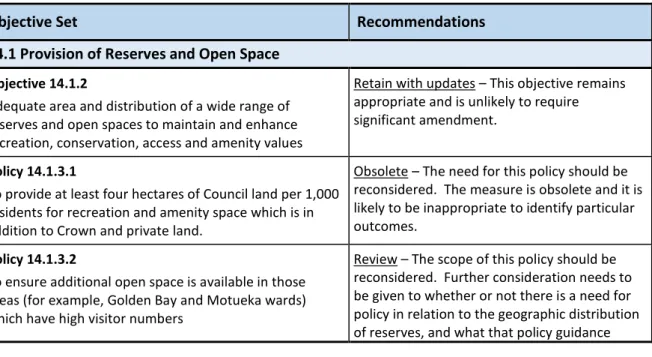
Purpose Statement
Scope
- District Plan Provisions Reviewed
- Timeframe of Evaluation
- Summary of Methodology
- Summary of Consultation
- Tasman District Councillors
- Tasman Environmental Policy Iwi Working Group
Avoidance of significant negative effects of activities and facilities on open spaces and recreational areas, as well as on the amenity values of the surrounding areas. The Open Space zone aims for low activity and is generally used for neighborhood parks and green spaces. Tracking how the plan is designed to affect results – are the goals conveyed in the objectives to the rules and methods.
However, the attribution of TRMP results must always be seen in the wider context of change. If necessary, the evaluation can also be based on the results of the TRMP usability survey (TDC, 2013). Conservation Zone Resource Consents - open space and recreation zone service claims database (appeals).
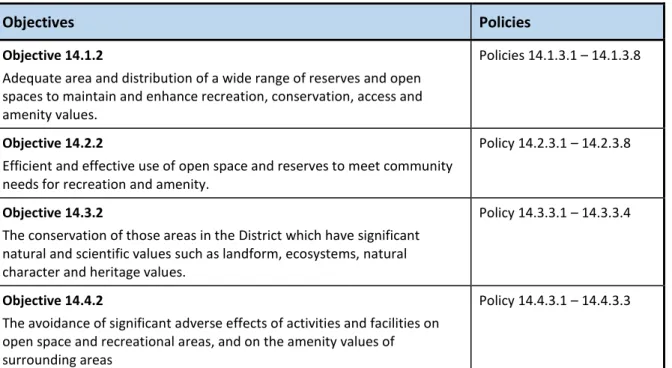
Effectiveness and Efficiency Evaluation
Context
- Legislation Changes
- Relevant Plan Changes
- Relevant Local Case law
- Māori Cultural and Land Values
- Other Factors
Increasing the importance of LID has had implications for the provision and management of reserves and open spaces. Explanatory text on the role that reserves and open space play in stormwater management, particularly in relation to the shared-use function that can be achieved. Reserves and open space areas can contribute to and improve the mauri of the land and water.
As the provision of parks, reserves and open spaces is a core function of the Council, there is a substantial set of documents that guide planning, design, construction and management. From the way Chapter 14 is written, it appears to be intended that the primary effect of the policy framework is to influence and guide the policy of the Council's Community Development Team responsible for the delivery of reserves and public open space and recreational facilities. In other words, the effect of the policy framework on the community is indirect; implemented through documents such as the Open Space Strategy and the Reserves General Policies.
Consequently, the objectives and policies in Chapter 14 have been set up as a method to deliver some positive Reserve and Open Space outcomes for the community. The objectives and the policies, as well as the content of the other Reserves and Open Space documents, are taken into account and guide the provision of reserves through land use and subdivision resource consent processes. The objectives and policies will guide decision-making in a number of aspects of reserves and open spaces.
To identify potential open spaces prior to urban subdivision to meet the open space needs of future residents and workers in the area. To regulate financial contributions to reserves and community services in lieu of allotment of land for walking/cycling paths, open spaces and recreational reserve purposes, unless otherwise agreed. To promote the integration of reserves and open spaces within a whole country and Low Impact Design approach to drainage and stormwater management.
Design open spaces and recreational areas to complement and, where necessary, improve the visual amenity of the surrounding area.
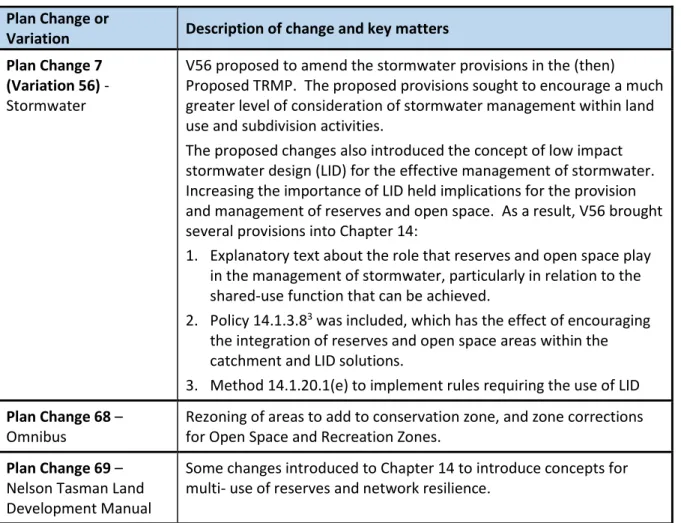
Internal Consistency of Provisions
- Section 14.1: Provision of Reserves and Open Space
- Section 14.2: Use of Reserves and Open Space
- Section 14.3: Conservation of Areas of Significant Values
- Section 14.4: Effects of Activities and Facilities on Reserves and Surrounding
To provide for new open space areas that are convenient and accessible to users, including the provision of walking and cycling links in and around townships, between townships and between reserves. To encourage the integration of reserves and open space areas within a whole catchment and Low Impact Design approach. To maintain and where necessary improve the quality of reserves, open spaces and public recreational facilities.
As a community council activity, improvements to parks and reserves are a manifestation of this non-plan based policy. Abandon land that is unsuitable (following community consultation) and considered surplus on Council's reserve/open register and acquire more suitable land. This objective and policies address a subset of reserves and open space themes: those areas of significant natural or scientific value.
Policy 14.3.3.1 is likely to support this objective as it refers to the identification and protection of areas of. The policy may be able to be implemented through subdivision, but no specific guidance to do so is specified in the Plan (eg the policy is not reflected in Schedule 16.3A). Although limited in number and broad in effect, policies 14.4.3.1 and 14.4.3.2 apply to non-regulatory management activities of the Council, as well as to land use regulations that control activities in open, recreational and conservation areas.
Controlling the scale, size and location of buildings and structures to ensure that the open space character of the reserves is maintained. To ensure that activities associated with open space and reserves do not give rise to adverse environmental impacts (such as noise, glare, traffic, pesticide discharge) without adequate mitigation. Temporary community activities on open space and reserves are less certain about their effects, but this policy provides some guidance.
The current structure reduces clarity regarding the relative roles of TRUMP versus Community Development Reserves and open space planning documents.

Evidence of Implementation
- Provision of Reserves
- Qualities and Activities on Reserve Land
- Conservation Values
- Effects of Activities on Reserves and Open Spaces, and on Surrounding Areas
The extent to which resource consent applications and decisions relating to Reserves and Open Space have achieved outcomes. Key measures such as living within a 5-minute walk or within 500 meters of open space have been adopted. However, when considering the open space provided by schools, these criteria are met.
The above policies of the RGP do not strictly implement Chapter 14, but provide guidance to the administrators of the Council's Reserve and Open Space assets. The OSS identifies the Council's strategy in relation to existing and future reserves and open spaces. Current levels of service for the provision of open space are exceeded by most of the District.” (p21).
Based on the latest survey information, the provision of reserves and open spaces meets or exceeds the level of service set by Council. How and to what extent the relevant qualitative policies in Chapter 14 flow through in reserves and Open Space planning documents. NTLDM provides a strong level of support for the quality of reserves and open spaces.
The TRMP states that "the identification, protection and enhancement of areas of significant natural and scientific value" is a key resource management issue for reserves and open space (14.3). There is currently a lack of recognition in Chapter 14 objectives and policies that conservation sites, whether for ecological, landscape, or scientific purposes, may need to be acquired and maintained under Open Space Zoning. The Open Space area and its policy regime may need to be broader to reflect this function.
In summary: Objective 14.4.2 seeks to "prevent significant adverse effects of activities and facilities on open space and recreational areas and on the amenity of surrounding areas". Council carrying out its activities (buildings, lighting, maintenance, etc.) of reserves and open space in such a way as to avoid, correct or mitigate potential impacts on the reserve itself and also on off-site impacts that might otherwise occur; Satisfaction data previously presented by Reserves AMP shows that Tasman's reserves and open space areas are well maintained and maintain adequate levels of amenity.
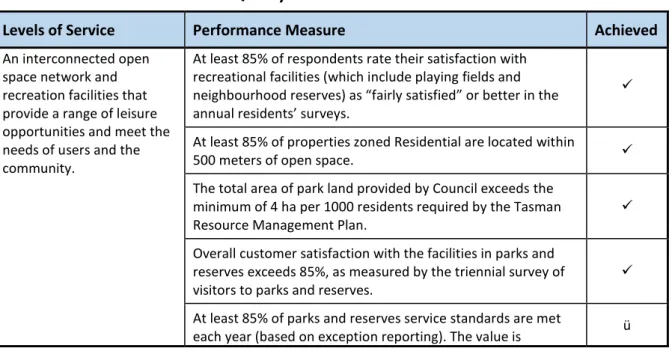
Effectiveness
- Cultural Effectiveness
Some of the policies under this objective have been found to be archaic and inappropriate. More recent Council planning documents provide a more modern reflection of the types of reserves and open space that ratepayers are seeking. Another example of this is the lack of much spatial control over the supply of reserves and open space.
In addition, staff advise that comprehensive open space and walking and cycling links are provided. Open space and reserve areas are currently meeting community needs for recreation and amenity. Regarding objective 14.1.2, the achievement of these results appears to be only weakly based on the implementation of
There may be some value in the policies that provide guidance to decision makers on resource consent applications to provide for an efficient and effective use of the open space resource, and to provide for recreation and amenity. But, again, as the Council is the landowner, it is probably more appropriate that the RGP and the RMPs are used to guide the activities that may be permissible on open space and recreational land. The supportive methods and flexibility of rules allow for an appropriate range of activities on recreation and open space reserves.
The objective is in some ways quite complex, as it first seeks to avoid significant negative impacts of activities and facilities on open spaces and recreational areas. There is then another part of the objective, which then seeks to avoid significant negative effects beyond the boundaries of the open space or recreational area. To the extent that the council has control over the use of open space and land in the recreation zone, this objective is effective.
With the objective of avoiding significant off-site adverse effects, there may be value in providing additional controls over the timing of applications to create sensitive receptors around open space and recreational sites.
Key Data
